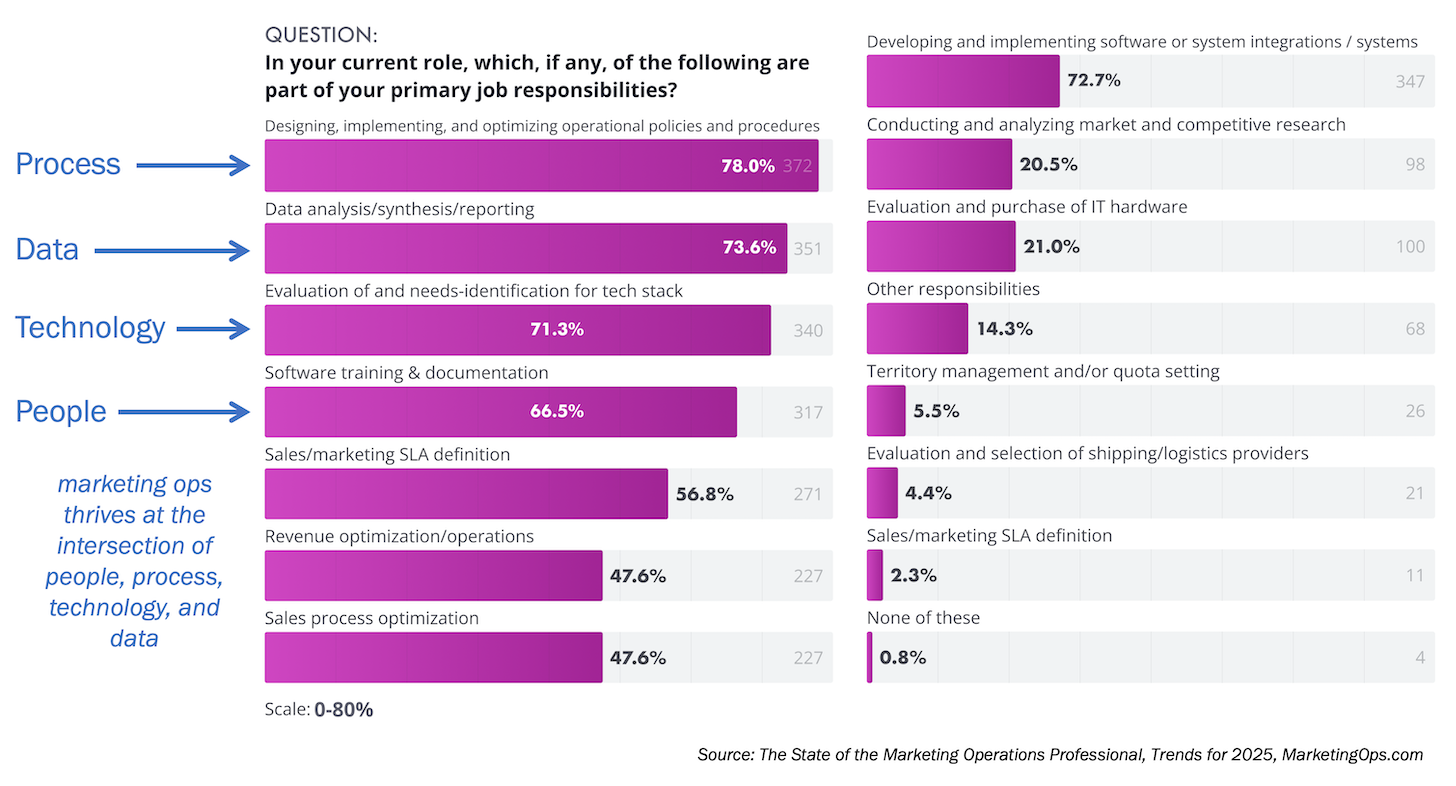
Last week, Mike Rizzo and team at MarketingOps.com hosted their annual MOps-Apalooza event with 400+ marketing ops people. I was honored to be one of their keynote speakers, and I’ll share the core theme of my talk with you in a moment. But first…
They also released their annual State of the Marketing Operations Professionals, an epic 87-page report that surveyed more than 600 marketing ops pros on almost every facet of their careers. It’s a veritable gold mine of data and insights about a discipline that is still comparatively quite new and not fully understood across the broader marketing industry.
That said, marketing ops has come a long way from “the island of misfit toys” that one snarky analyst called it over a decade ago. Here are a few key points from the report:
Marketing ops has become an established career, with decent 6-figure salaries and an increasing pool of tenured talent with 6+ years of experience. On a scale of 1-7 — 1 as the least favorable answer, 7 as the most — they generally have a score of ~4.5 for feeling they’re compensated fairly, understood, and valued by their employers. Not great, but well above the middle point. (And not bad in today’s macro environment.)
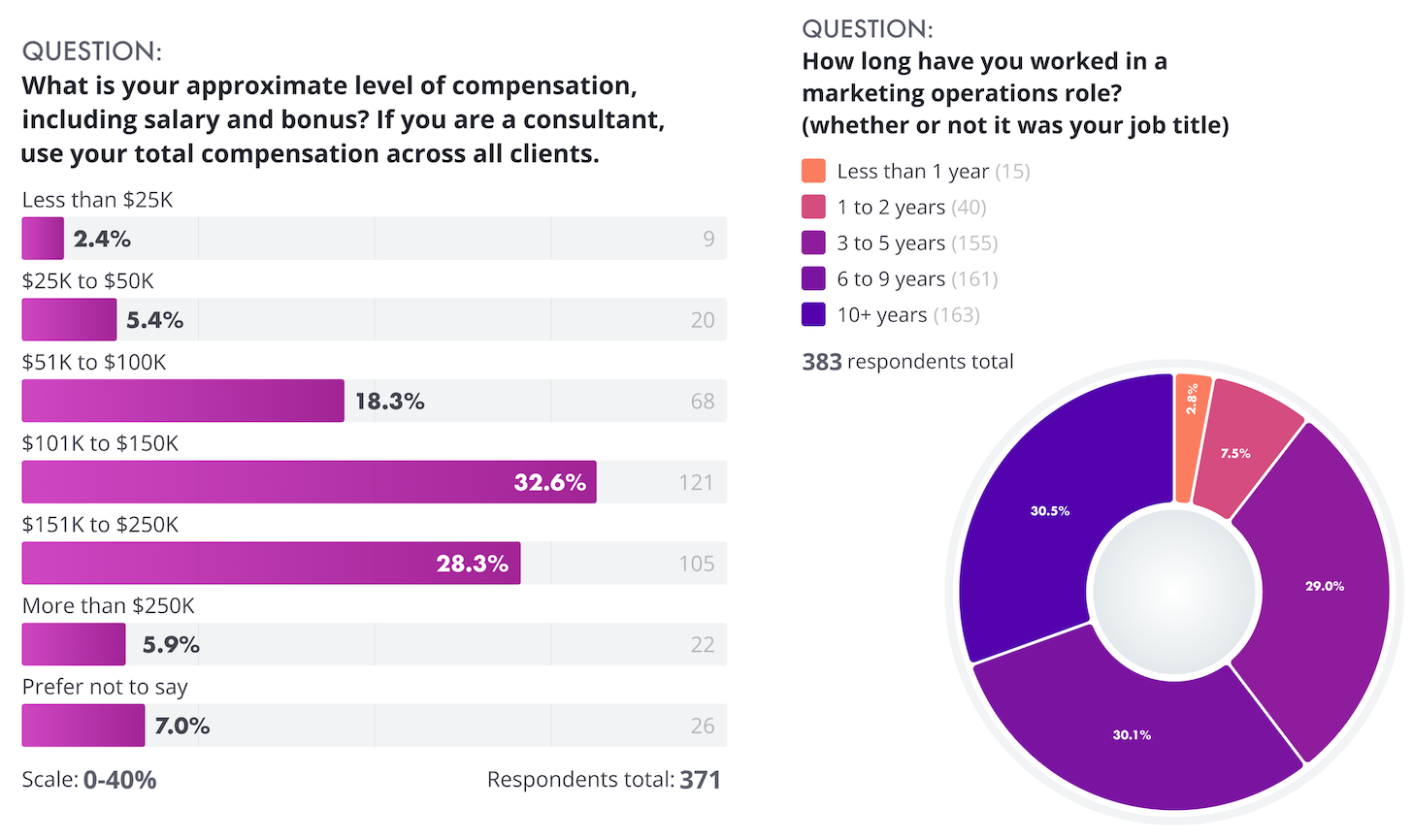
As shown at the top of this post, marketing ops is clearly an entangled mix of process, technology, and data with 77.8%, 72.7%, and 73.3% of responsibilities matching those three pillars. (When asked to pick one primary responsibility, the answers were nearly evenly split.)
Data is becoming an even more central part of marketing ops strategy and leadership, with emphasis moving forward on data enrichment (52.4%), data quality (46.8%), and data integration (45.8%), and topping the list.
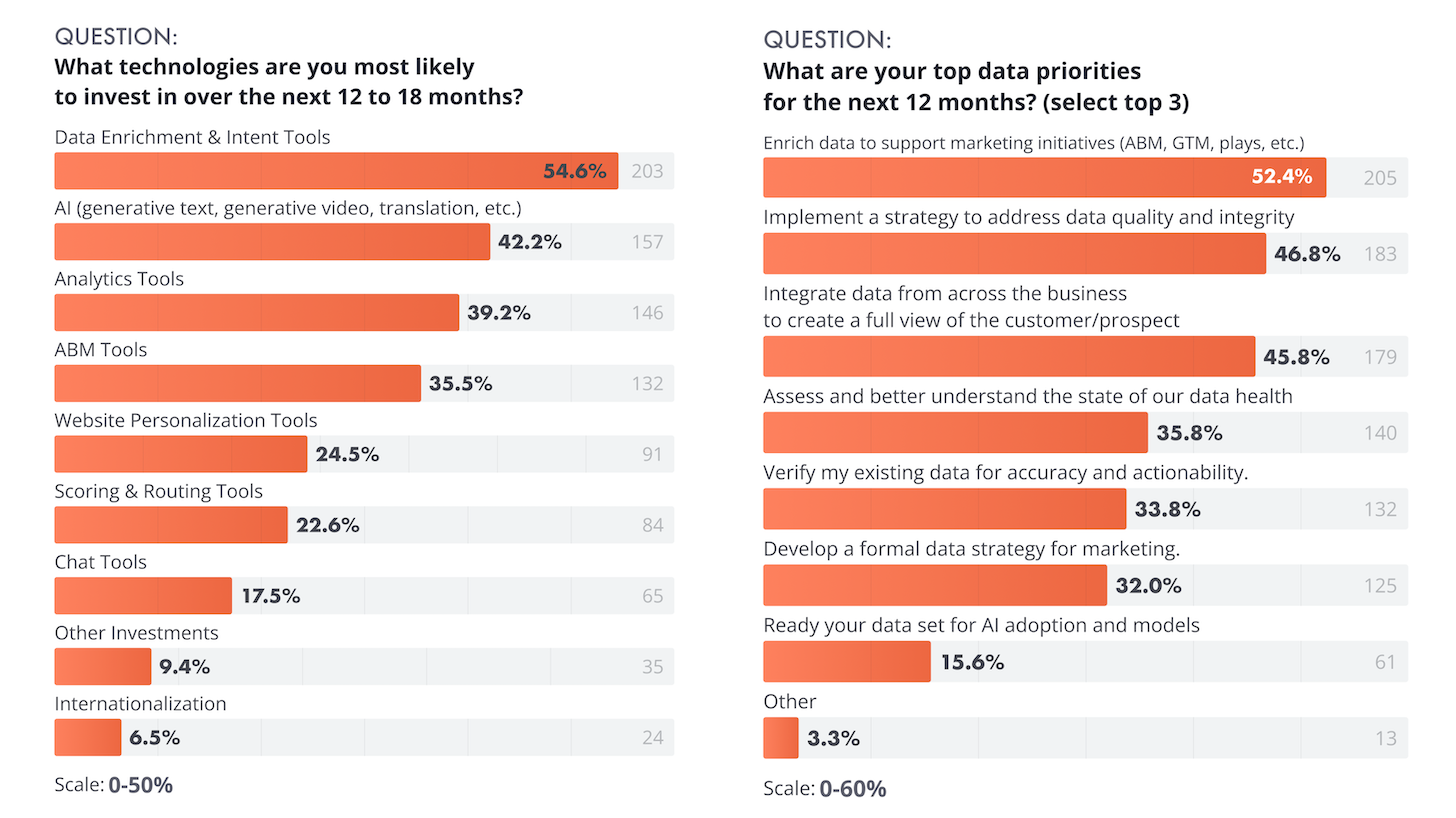
This is reflected in the top set of technologies that marketing ops expects to invest in over the next 12-18 months, with data enrichment and intent tools at the top (54.6%). Of course, AI is in the top three (42.2%). But the next two are also data-centric: analytics tools (39.2%) and ABM tools (35.5%).
So given that a core responsibility of marketing ops is the evolutioon of marketing’s tech stack, and they’ve got a significant list of new technologies they’re planning for the year ahead, we get to the finding that is my long-time pet rock: integration.
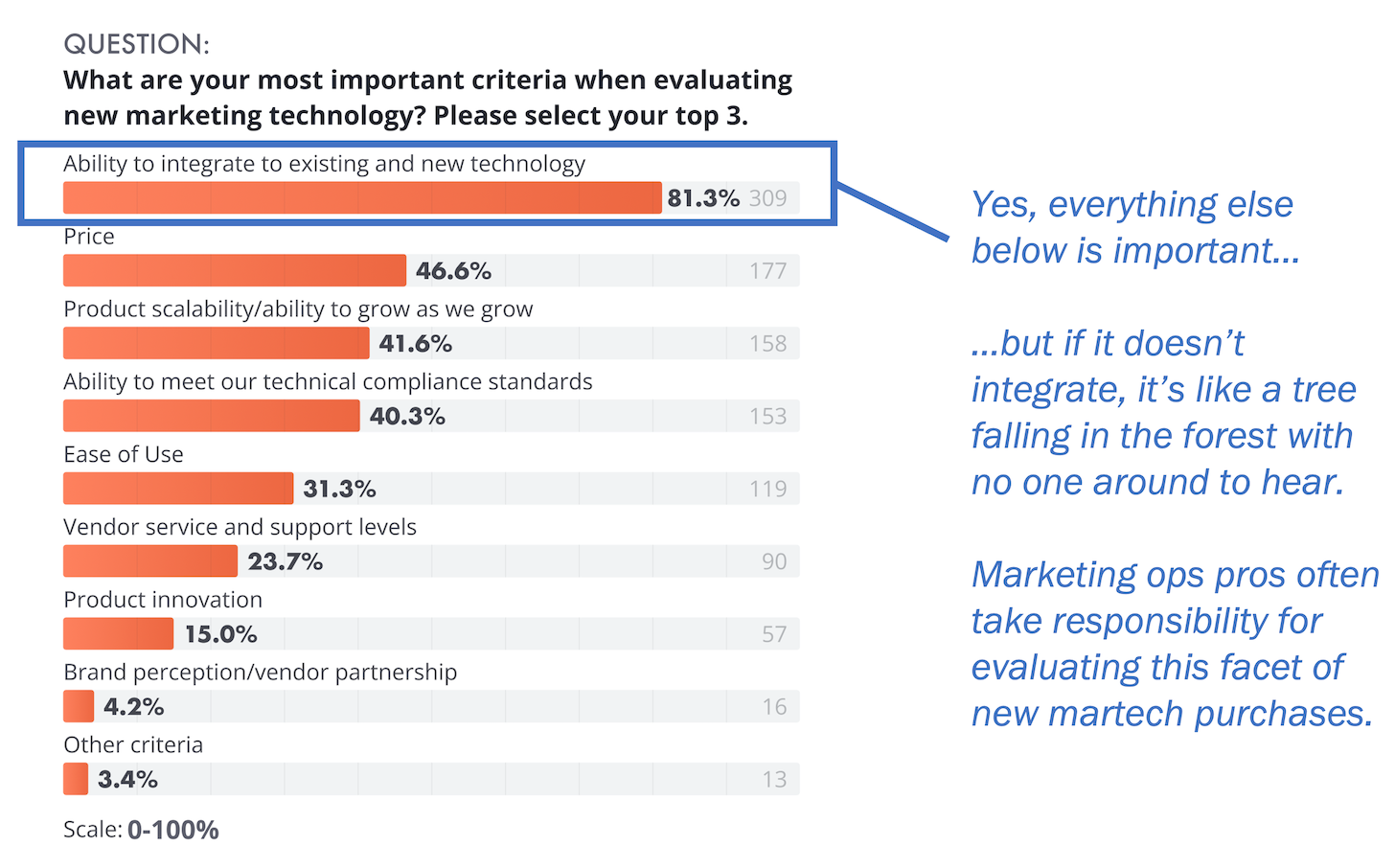
The “ability to integrate” is by far the #1 criteria (81.3%) — almost double the next highest ranked factor — that marketing ops professionals have when evaluating new marketing technology.
That’s not to say that price, scalability, compliance, ease of use, service and support, etc., aren’t important. Of course, they are.
But most significant martech purchases are (or should be) made with a buying group, where other stakeholders often cover well these other factors. But marketing operations is the stakeholder that tunes in on integration. Because they know that even if a new product or platform checks all the other boxes, if it it doesn’t integrate well to the rest of the tech stack, it’s likely to end up as an anchor more than a sail.
My other pet rock has been advocating for agile management approaches in marketing and martech since 2010. Good to see that agile is the dominant approach professional marketing ops teams are taking to managing their work.
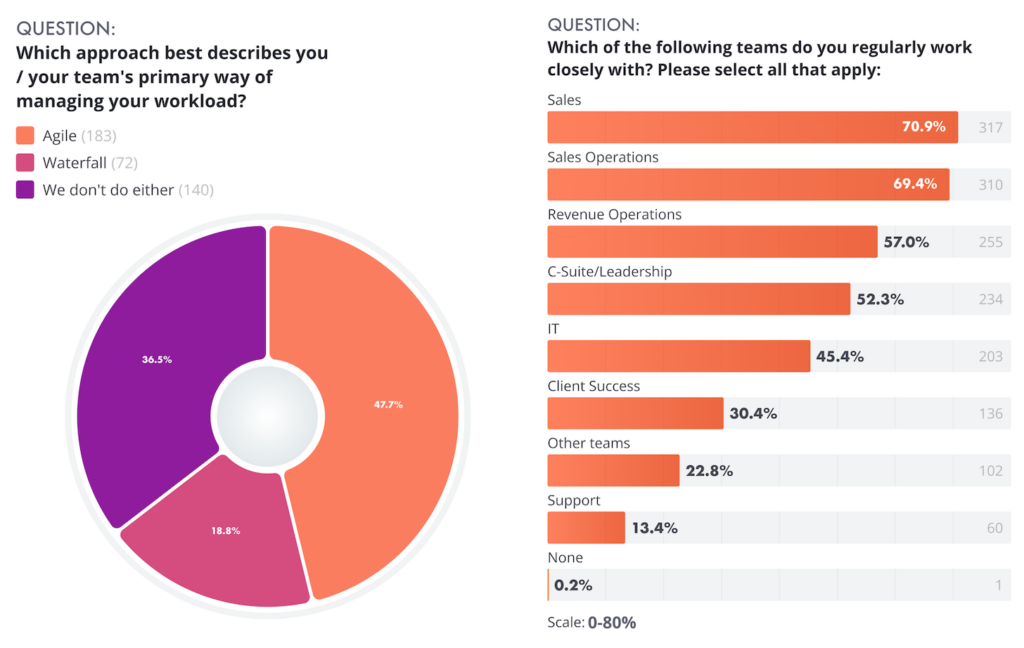
It’s also good to see that marketing operations now works closely with not just sales, sales ops, and rev ops, but also the C-suite and IT. Although as other data in the report shows, there’s still plenty of room for improvement in alignment with these collaborations.
One more finding from this report that I want to highlight is the level of digital maturity that marketing ops respondents rated their organizations:
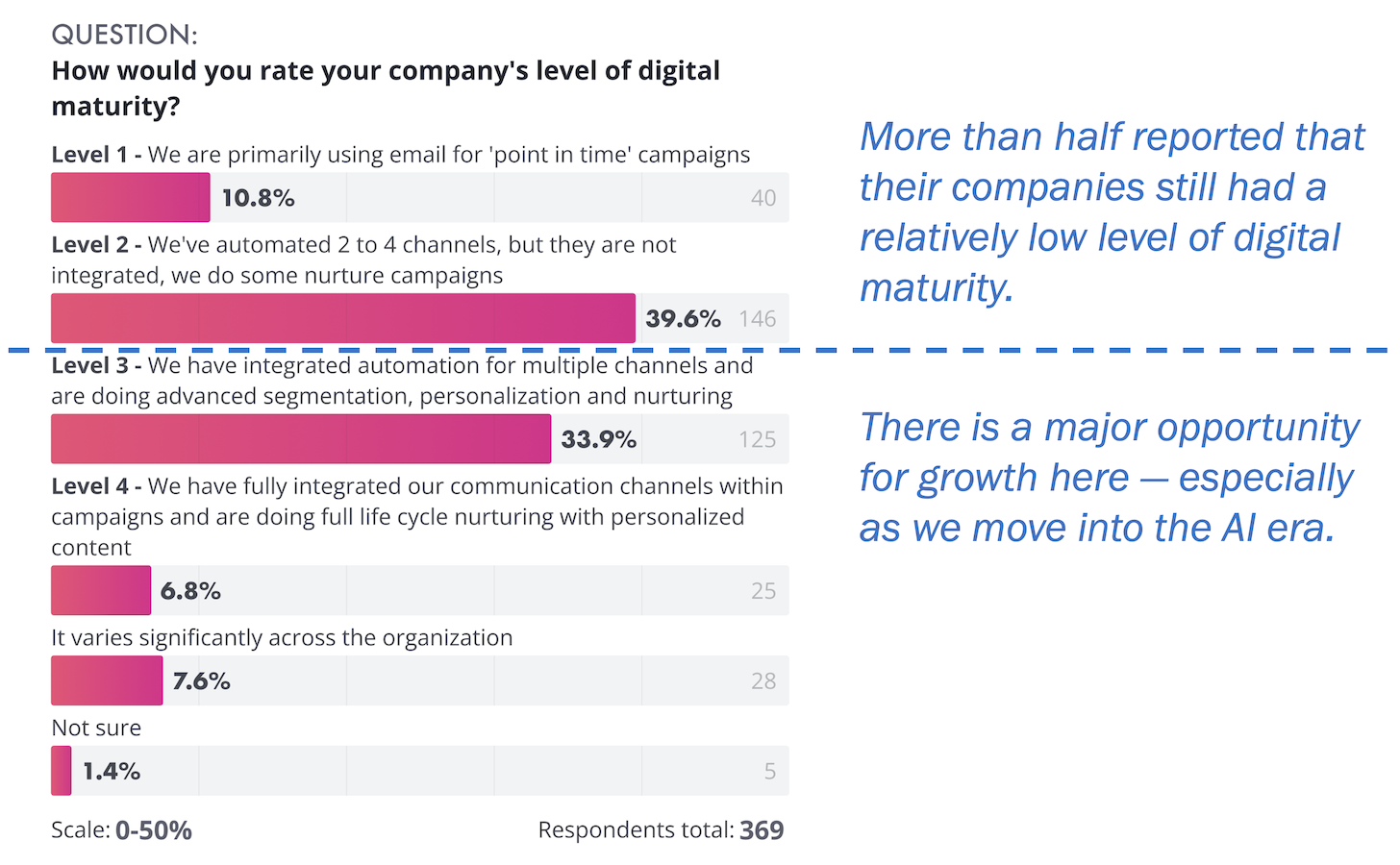
The relatively low digital maturity of these companies, mostly Level 1 or Level 2, attests that while we no longer talk about “digital transformation,” most companies still have a long way to go. Or, for a more positive spin, there’s still tremendous opportunity for growth in digital operations overall.
Marketing ops teams can play — must play — an essential role in this leveling up.
Which brings me to the core theme of my keynote at MOps-Apalooza. Marketing ops has grown as a more integral part of marketing. But it’s still under-resourced and under-appreciated relative to other facets of the department. Strategy and creative are prized above all else. But that’s still not where most of marketing labor is allocated.
Most of the hours spent in marketing today go into various kinds of production and analysis. Because it takes a lot of skilled labor to turn those strategic and creative ideas into reality.
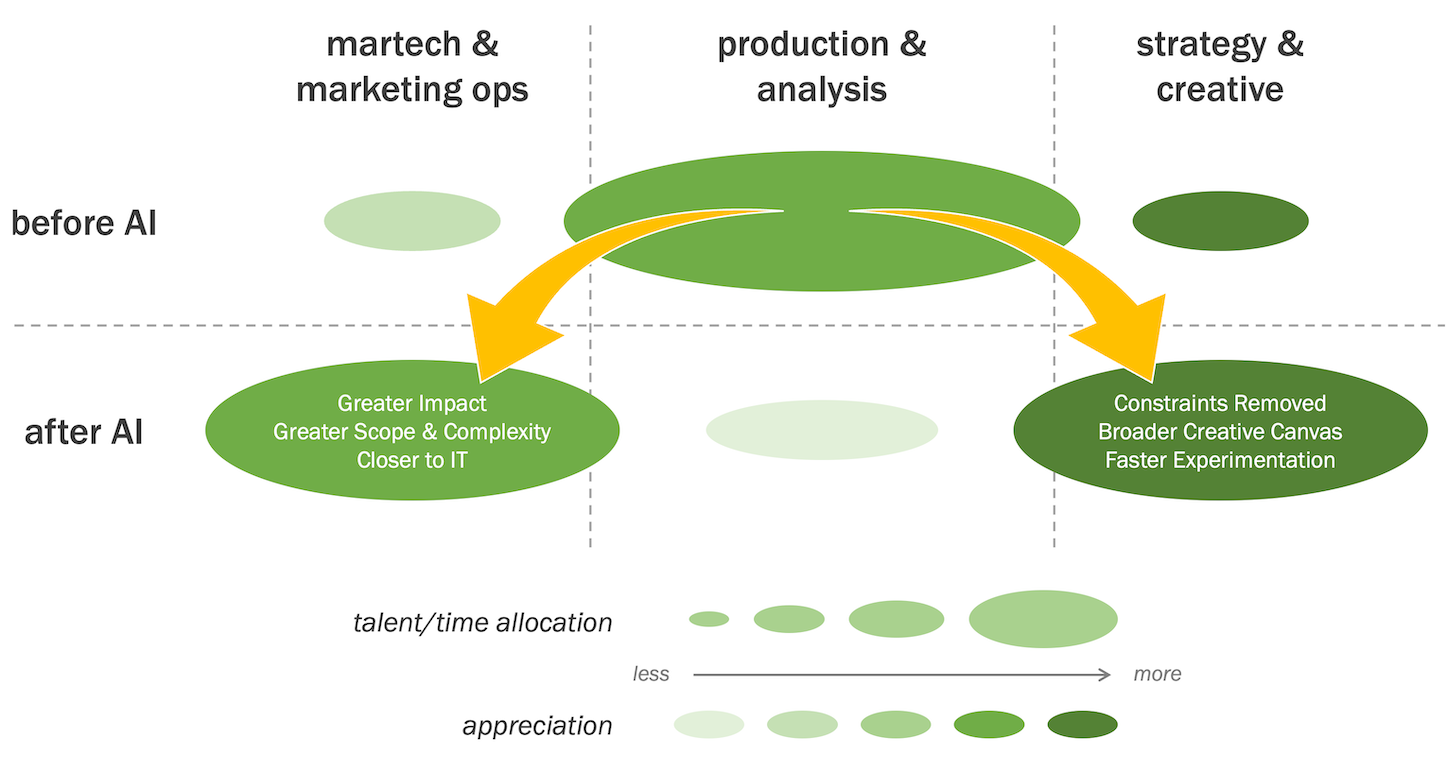
But I believe that over the next 5 years, AI will automate and optimize a large portion of that production and analysis work. At the same time, it will dramatically expand the scope and scale of creative experimentation that marketing can do. I think it will be a golden age of marketing strategy and creative — you ain’t seen nuttin’, Don Draper — with a lot more human energy being allocated directly to that work.
The caveat, however, is that for all that amazing AI automation, optimization, and creative empowerment to work, the underlying technology and data infrastructure and operating system needs to be extremely well-run.
That’s the mission of marketing operations.
As that impact and recognition grows, the investment and appreciation in great marketing ops will too.
Want a ton more great insights and data points on marketing ops? Download a free copy of The State of the Marketing Operations Professional report. It’s a fantastic resource. Kudos, Mike and team!


